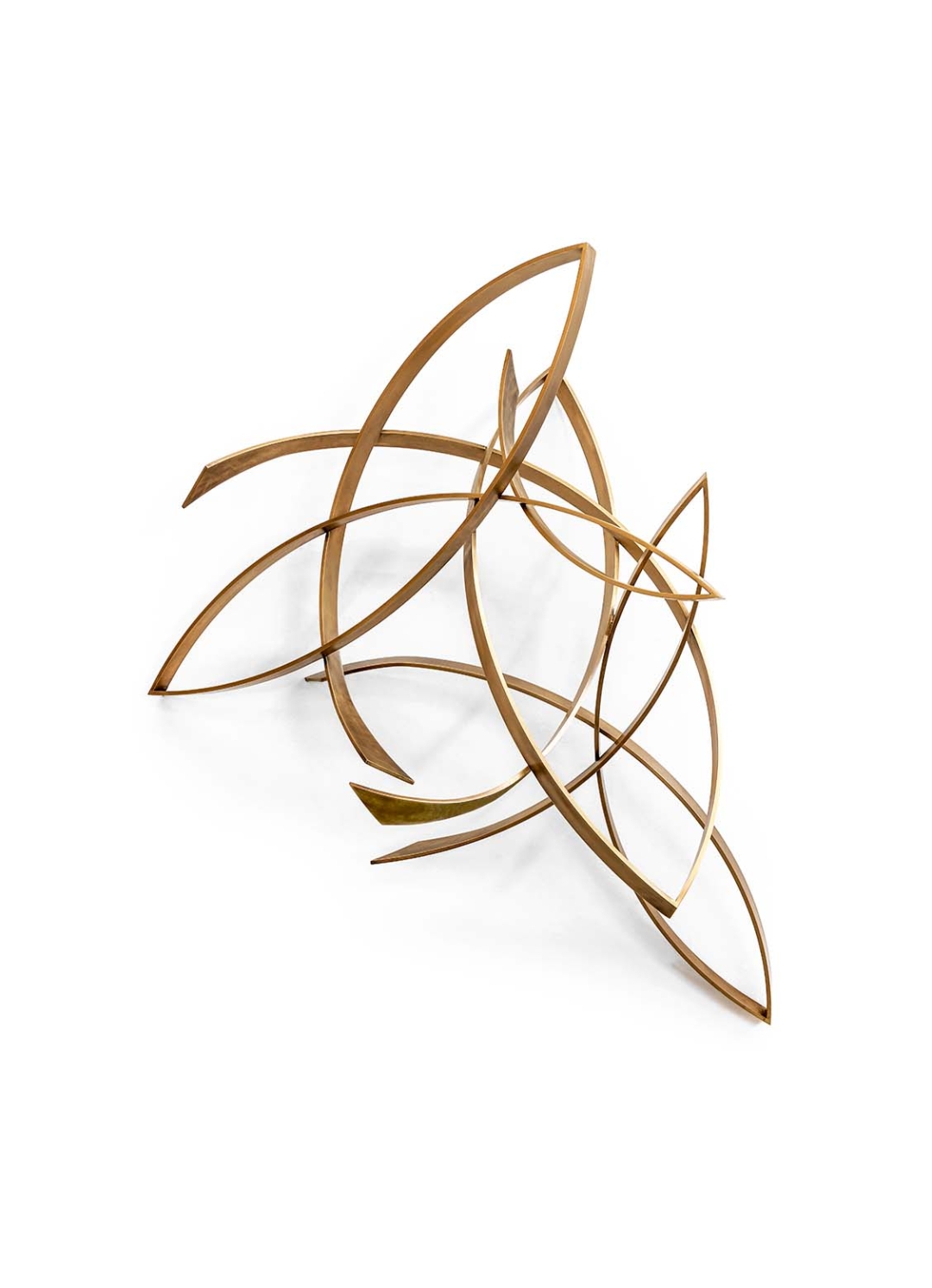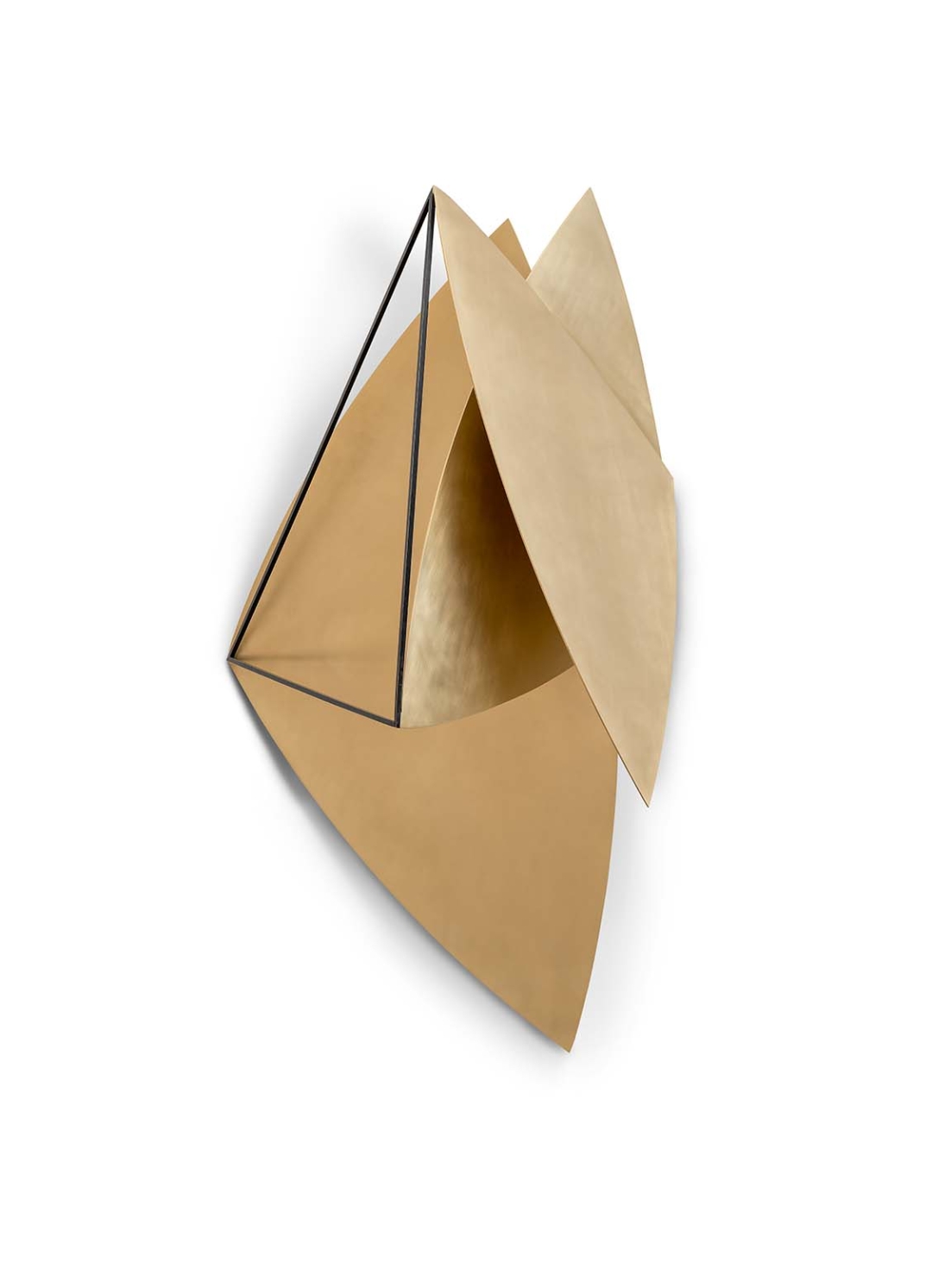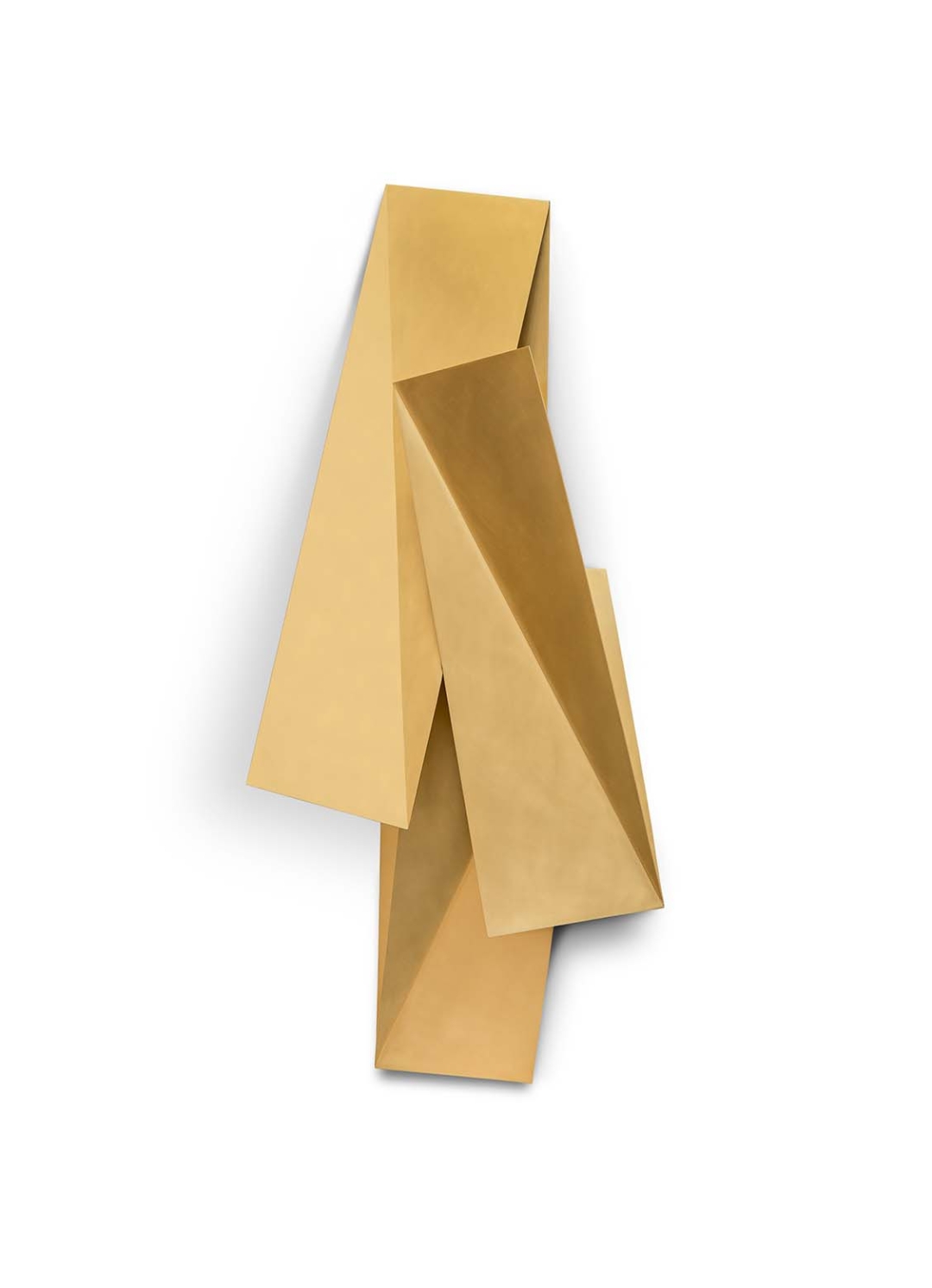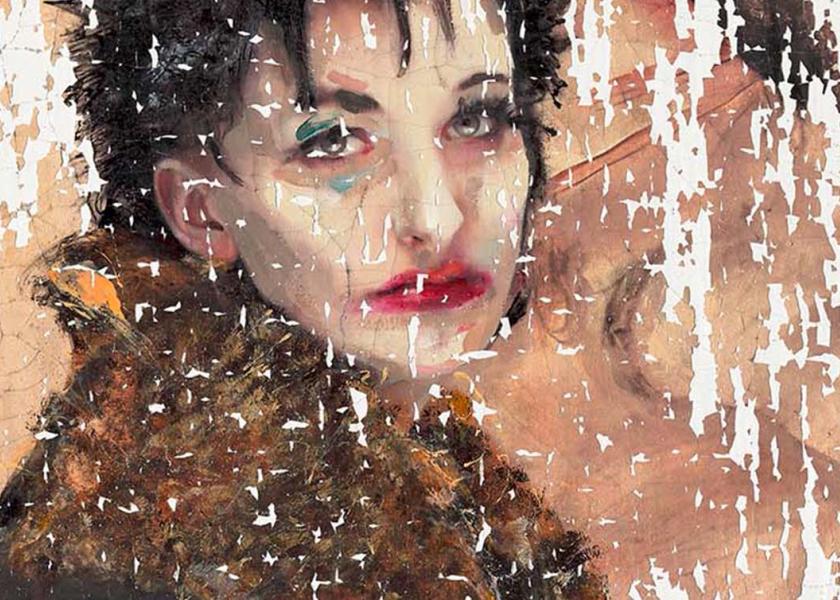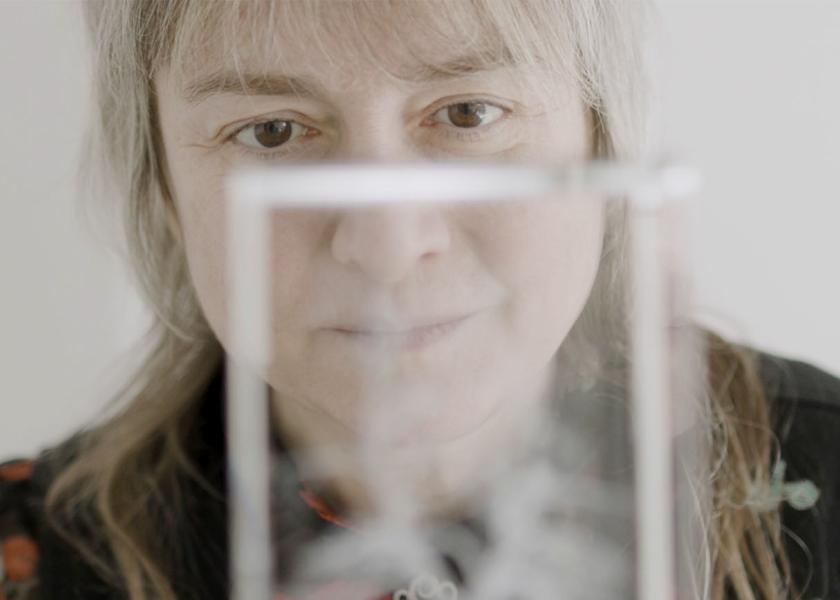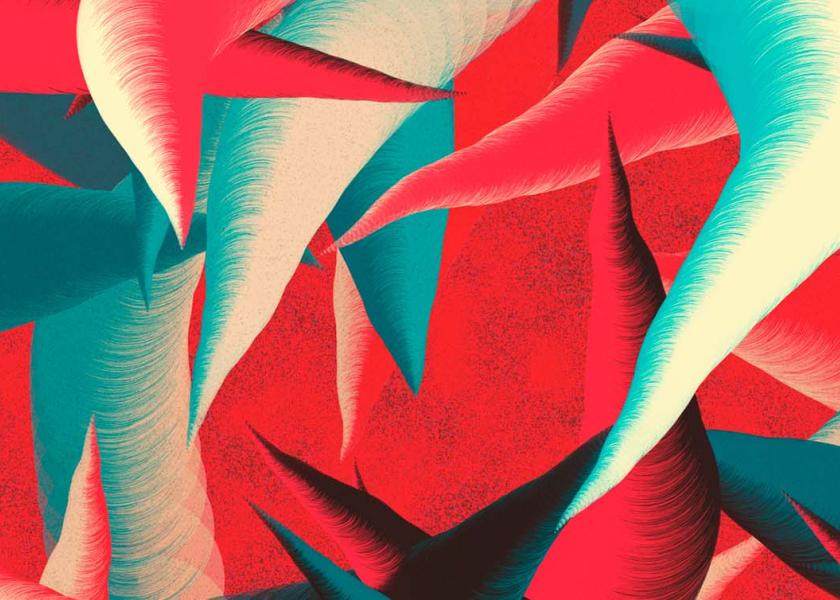David Rodríguez Caballero
The metal alchemist
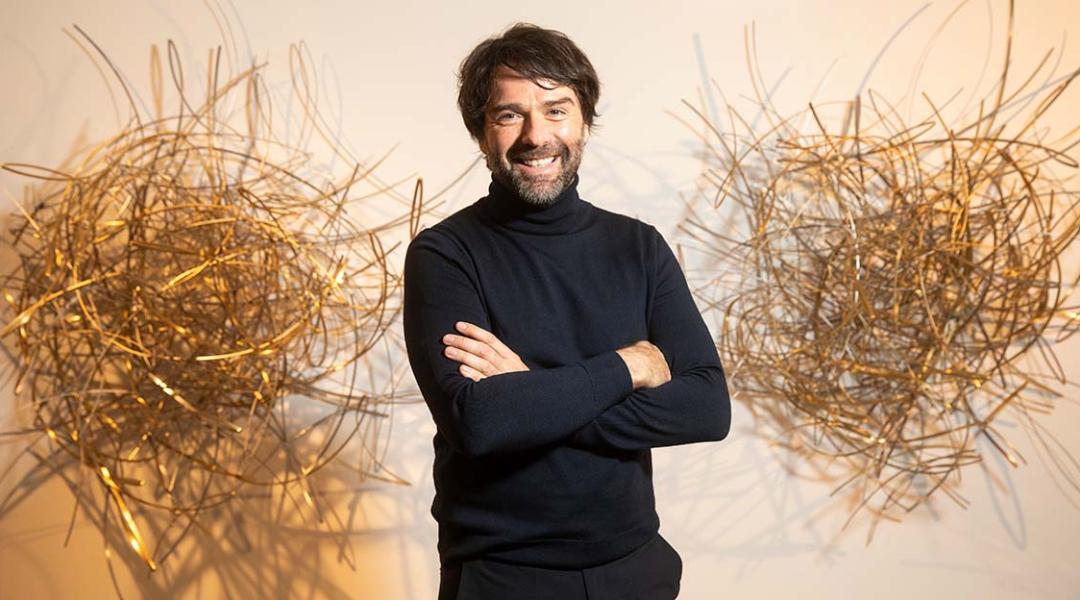
The pure lines of the sculptures created by David Rodríguez Caballero establish a unique relationship with light and movement. Elegant and ethereal, his works have been exhibited (and admired) around the world. He compares the career of artists to that of athletes and, funnily enough, his latest challenge has been creating the Madrid Open tennis trophy.
David Rodríguez Caballero (Palencia, 1970) always knew he wanted to be an artist. And, as he himself admits, he never pictured himself as anything else. His mother, who shared her passion for art with him from a young age, influenced his calling from the beginning. Slowly and naturally, his path led him towards sculpture, a discipline in which he stands out as one of the leading artists in Spain. He talks to us not long after tennis player Carlos Alcaraz lifted the new Madrid Open trophy, one of his latest creations, towards the sky, showing it to the world. From this successful present we take a leap back in time to get to know this metal alchemist better.
Which is your first memory related to art? Your first symptoms of Stendhal syndrome, for example.
I was exposed to art from an incredibly early age, my mother made sure of it. In a way, she projected her passion onto me. I remember visiting the Museum of Navarra and the Pamplona Cathedral [he grew up there], specifically its magnificent cloisters. Stendhal syndrome? It came later on, during my month-long stay in London, during which I visited its museums every day: the Tate, the Portrait Gallery, the British Museum... I practically lived there.
So, when did your creative juices start flowing, how did they develop, and who was your mentor?
My first relationship to art started when I was incredibly young, at an art school where I painted landscapes. It was the highlight of my week. My mentor was my teacher, a man who was almost six foot five, with the appearance of a Greco painting. When he made corrections, the way he brought together the shapes and colour of my painting with just a few brushstrokes seemed like magic to me.
When did you realise you could live exclusively off art?
I always wanted to work as an artist, and I was sure I’d make it. I couldn’t see myself any other way. When I finished university, I was able to make art my job with a lot of hard work, dedication, and observation.
“I always wanted to work as an artist, and I was sure I’d make it. I couldn’t see myself any other way”
Which motivations lie behind your leap from painting to sculpture?
It was a really natural transition... It was like fate. The precedent was adding metal to my pictorial works, then came folds and three-dimensionality, and so on until I became a sculptor.
Brass, bronze, copper, aluminium... Do you consider yourself an alchemist of the matter?
Metal is alchemy. It’s a magical material with opposing qualities, it’s both extremely strong and malleable at the same time. While working with it, it’s somewhat uncontrollable. It’s similar to what happens when cooking ceramics, fire decides beyond the artist’s hand.
Light is key in your work. Despite its intangibility, is it another material for you? How do you use it?
There are two crucial elements that have always been present in my work, and through which I’ve developed my sculpture: folds and light. Indeed, I use light as a material: by eroding metal, and depending on the lighting effect of the moment, I create a fluctuating reflection of light. Light tones folded planes and creates complementary ones through shadows, which contribute to shaping the final piece.
Where does David Rodríguez Caballero find inspiration?
Anywhere... Especially in the little things, they’re what make a difference. Details are more important than big statements. Without them we’d be lost.
You’re inspired by both African masks and origami; do you consider yourself a multicultural artist?
Absolutely. My life has been multicultural from a really young age. True to my Gemini nature, I’ve always wanted this and that. I’m very curious and that leads me towards positive distraction in my topics and passions. My work is multicultural, just like my family and my lifestyle.
You have a studio in Madrid and another in New York, how important has that city been to you and what does it still bring you?
New York has been essential for me as an artist. I was fortunate enough to live there in the 1990s and the 2010s. It’s a city that improves the work of artists. After COVID-19, things have changed or are changing. The city has become less energetic, but I’m sure that it’ll recover its vividness and excellence.
“You need a series of skills to stand out, but they’re useless without hard work, dedication, and a desire to improve”
You had to go to New York to take the leap; do you think that Spain looks after talent?
Spain has changed a lot in recent years. Especially Madrid. In my case, I needed to go to New York to take that leap. Spain is full of talent, but its capacity for concentration and strategy needs vast improvement.
Do you think talent is born or made?
You need a series of skills to stand out, but they’re useless without hard work, dedication, and a desire to improve. For me, 70% is practice, practice, practice.
Your career has already been going for a couple of decades, but even so, you’re still the youngest sculptor at Marlborough, what does that mean to you?
Indeed, I’m the gallery’s youngest sculptor, but the final journey is the important thing. An artist’s life is unpredictable. It’s similar to that of athletes, but with different timing.
The pandemic was a big blow to the art world, but how did it influence you creatively?
I’ve been really lucky. The pandemic allowed me to slow down my social life and pick up the pace at the studio. It’s been a terrible situation, but also something positive and necessary for me in terms of my relationship with my work. Crises and disasters have always brought me good things. It’s a kind of karmic shield I have.
